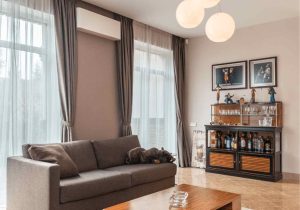
Plywood, as we all know, is a less expensive alternative to solid wood. Plywood is simple to form, readily available, and available in various textures ranging from smooth birch panels to mottled press board. Plywood is an incredibly versatile material utilized for a wide range of structural, interior, and exterior applications.
You must have seen wood in various forms at the carpenter’s workshop or your own house when renovating your home.
The wood, which appears as if multiple layers are bound together and is used in the construction of furniture, particularly wardrobes and kitchen cabinets, is called ply or plywood. It is your best companion in making interior furniture.
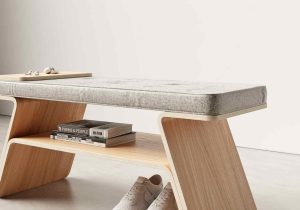
Today, people commonly use plywood, and it is crucial to understand its properties before using it.
Let’s discover the process of making plywood. Manufacturers create plywood by bonding thin sheets of wood together, achieving a uniform thickness in the final product.
In simple terms, one binds thin layers of wood of a particular size together to obtain a sheet of wood with good thickness, and each layer is called a veneer.
Manufacturers usually make the veneers from different woods such as teak, spruce, birch, etc. Typically, they obtain veneers from good quality wood.
The number of veneers selected is usually in odd numbers, like 3, 5, 7, etc. Such kinds of plies balance the sheet and ensures that there is no warping. Plywood is used extensively in the wood industry.
Today, most of the home decor and home furniture is made by using plywood. An advantage of plies is that they are cheap, can be recycled, and are flexible. Thus they can be used to make many products. Also since plies can be locally manufactured, it is easy to get.
Carpenters and interior designers prefer plywood over plain wood because unlike plain wood, plywood is durable and doesn’t shrink, crack, warp, twist in the long run. Of course, it also lasts for a long time.
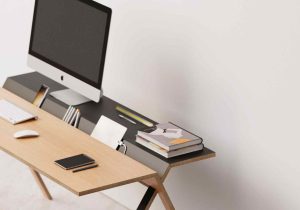
If you thought making a ply is easier and that it just needs some layers of wood and a good quality adhesive to stick them together, then you are right in some ways but wrong in many ways. Though the process of making a ply sounds easier, it is not that simple. At least 14 to 15 steps of processes go into making a sturdy ply.
Apart from being aware of the quality of the wood used to create the ply, one must also be careful of what goes inside the veneer that can directly impact the overall product.
Different kinds of plies are used for interiors and exteriors. Usually waterproof or water-resistant ply is utilized for exterior work. By the term interiors, it means that such ply is used for making furniture, doors, etc.
Such type of plywood is known as commercial MR plywood, wherein MR is the abbreviation for Moisture resistant. The exterior plywood goes by the term BWP or BWR plywood. BWP stands for Boiling Water Proof whereas BWR stands for Boiling Water Resistant.
Commercial plywood: In India, the term commercial ply is referred to as the ‘MR’ grade ply. This ply is the interior grade ply and used for making indoor furniture units. When it is said that moisture resistant, it does not mean it is water-resistant.
There is a huge difference between water and moisture, as you know. Waterproof ply is the BWR graded ones which are the boiling water-resistant ones. So commercial ply can withstand moisture to a certain extent but they are not waterproof.
IS: 303 – MR Plywood, BWR Plywood, Flexi Ply
IS: 710 – Marine Plywood
IS: 10701 – Structural plywood
IS: 5509-1980 – Fire Retardant Plywood
IS: 4990 – Shuttering Plywood
This ply is used for maximum precision. The inner ply sometimes measures only 0.005 inches, thus you can imagine how perfect the ply has been made.
Calibrated ply is mostly used for such furniture where uniformity in thickness has to be maintained.
This is a term used for exterior plywood and is in high demand in the production of marine applications. Marine ply is also used to make boats and preferred in industries due to its water-resistant factor.
Marine ply, though not much used for interiors, some do make use of it to make kitchen furniture since such types of furniture are often exposed to water.
Classification on the basis of the raw material (wood) used Hardwood plywood is a term used for plies made from teak or birth. This is one of the best quality plywood.

It is a term used for wood made from soft trees such as Pine, Fir, Spruce, or Cedar. Plies made from Mango tree wood are also softwood plies.
Other plywood terms Flexible plywood as the term implies is flexible plies that can be bent or rolled. Such types of plies are extremely in demand to make designer furniture. Fire-resistant ply is used in malls, theatres, restaurant kitchens to prevent any fire accidents.
Sanded plywood is a type of plywood that is structural in nature and has had both its face and back plies smoothed off during production. The veneers on the panels are cross-laminated, and there are three or more layers total.
Sanded plywood is the panel of choice for many uses where aesthetics are a priority due to its high quality face and back veneers and smooth sanded surface. As a structural material, sanded plywood also benefits from being dimensionally stable, resistant to impact, able to retain fasteners, and easy to work with.
Durable in framing and construction, this plywood goes by the name “sheathing” as well. Structural plywood is made with the most durable, watertight glues available. They are often given a grade of C or D. They are incredibly long-lasting, but can’t be rated higher due to the resulting increase in cost.
That said, structural plywood is not very adaptable to extreme climates. But they are still the most popular choices for furniture both inside and outside. Shelves, panels, bookcases, and other prominently displayed objects often make use of this types of plywood.
Due to its close resemblance to softwood plywood from the West, this type of plywood is commonly known as “Asian plywood.” The construction of this plywood involves the use of tropical wood sourced from countries such as Indonesia, Malaysia, and the Philippines. It has received widespread acclaim for its high quality density, uniform layering, and exceptional strength.
This type of plywood is manufactured by combining different tropical woods, initially harvested solely in Asia, but currently sourced from Africa and the Americas as well. The popularity of tropical plywood is due to its unique characteristics.
Named for its flexibility, flexible plywood is employed in crafting flexible furniture and constructions. Many pieces of furniture from the eighteenth century featured curved structural forms.
This type of plywood finds application in shaping curved surfaces for furniture and interior decoration (such as covering a circular building column with plywood).
Its high-quality construction from strong wood ensures overall durability.
When compared to standard plywood or any other types of plywood, this material is much lighter. It is quite simple to travel with and set up.
The subfloor consists of the decking that is laid over the flooring beams before the final floor is laid. Plywood subfloor panels must adhere to the joists’ spacing, which determines their thickness.
The term “span rating” describes this value. The length of the floor’s fasteners tells how thick the plywood subfloor over a slab at grade should be.
Plywood sizes encompass a range of dimensions crucial for diverse construction endeavours. The standard plywood sheet sizes typically include the widely utilised 4×8 feet, but variations extend from 2×2 to 5×10 feet to accommodate specific project requirements.
Understanding the size of plywood sheets is fundamental, as it dictates the scale and efficiency of construction, offering flexibility in plywood measurements and ensuring compatibility with various applications. Familiarity with standard plywood sizes is essential for carpenters, builders, and DIY enthusiasts alike, allowing for precise planning and minimising waste in woodworking projects.
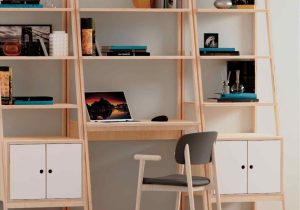
A versatile building material, plywood is formed by bonding layers of wood veneer together, creating a sheet that is both sturdy and stable. Its production involves the use of various wood types, each contributing to the plywood’s distinct characteristics.
Softwoods like pine and hardwoods such as birch or oak are typically used, giving the plywood a range of strengths and textures. Plywood is well-known for its weather-resistant attributes, making it a favoured option for outdoor applications like roof sheathing.
Its layered construction enhances durability, mitigating the risk of warping or splitting commonly associated with solid wood.
Among the diverse categories, particle board and lumber core plywood stand out. Particle board plywood is constructed from wood particles, offering a cost-effective option with commendable strength. Lumber core plywood, on the other hand, features a core made of solid wood strips, providing a balance between cost and durability.
For applications demanding the highest quality and strength, aircraft plywood is unparalleled. Designed to meet stringent standards, it’s a top-tier choice for aerospace and other specialized industries.
In construction and woodworking, the selection of plywood is critical. Whether for framing, furniture, or structural components, the varied types of plywood cater to different needs, offering a solution for every project. The adaptability of plywood, combined with its durability and strength, makes it an indispensable material in the world of construction and design.
A typical material for outside wall sheathing is plywood. It may serve as a solid foundation for finishes like siding or brick since it is robust and long-lasting. Plywood is easy to find and can be bought in different thicknesses to suit different needs. It is also easy to put together.
Using plywood for internal walls has certain benefits. Plywood is sturdy and can withstand a lot of weight, making it perfect for hanging big objects like bookcases or paintings.
It can also withstand wet environments, making it suitable for use in places like bathrooms and kitchens. Plywood is versatile because it can be easily shaped to match different dimensions.
Roofing and flooring made of plywood are common owing to the material’s excellent strength-to-weight ratio, durability, and water resistance. Because of its ease of use, plywood is a popular material among both DIYers and professionals.
Plywood can be a terrific material for furniture, but it all depends on the design. It’s equally at home in either the backyard or the living room. If you’re going for a country or rustic look, plywood is a great material to use. It is also low-priced and simple to manipulate.
Plywood is an excellent choice if you want something a bit more contemporary. For outdoor furniture, its portability and low weight make it a top pick.
Plywood can serve as an indoor arena for a number of sports. It’s a low-priced, long-lasting material with plenty of room for personalization, making it perfect for making a one-of-a-kind game room. Plywood may be stained or painted to give your game a one-of-a-kind appearance.
Quality plywood is the best choice for long-term, intensive use. The plywood produced in the area isn’t up to the task of being used for high-end furniture, worktops, tabletops, etc. In order to ensure you’re getting high-quality plywood, it’s important to verify that it has the ISI certification.
You may end up paying more for plywood from an online retailer. Before making a plywood purchase, it’s wise to arm yourself with as much knowledge as possible on the subject. Because of the efficient manufacturing technique used in India, plywood sheets can be purchased for very little money.
There are a wide range of plywood options available. There are a wide variety of uses for each of these grades. For example, MR-grade plywood is perfect for doors and outdoor furniture that are always exposed to high humidity.
Nowadays, there is hardly any kitchen that is plain. Most householders prefer a modular kitchen as it is easy, convenient, elegant, and gives the kitchen a beautiful look. In India, plywood is most preferred to make a modular kitchen.
Plies with thicknesses ranging from 12 mm to 19 mm; these plies are typically waterproof and made of hardwood. Therefore, furniture makers commonly use these plies, especially for constructing modular kitchens and other furnishings. The preferred thickness is 16 mm, as it ensures the construction of a robust modular kitchen that also endures over an extended period due to its strength.
Typically, plywood is adorned with laminates, paints, and subsequently polished. Sunmica stands out as the most prevalent laminate utilized for embellishing plywood. It is also popular because it is available in different colours, textures and even patterns.
Compared to laminates, paints are less expensive and protect the wood for a long time.While polishing is typically associated with hardwood, plies are also polished to achieve a smooth and attractive appearance. Ply is best for wardrobes. As interior designs are improving with technology, there also have been some great innovations in wardrobes.
Ply’s flexibility and strength make it the most suitable material to make wardrobes. Certainly, you can also decorate them according to your preference, thereby giving them a beautiful exterior appearance.

Due to the lack of solid wood availability, the preference of using plywood in making different furniture options is on the rise lately. Though there are also many other options available today such as MDF, following are a few features of plywood which are the reason behind its wide popularity:
1. One can determine the quality of the plywood by the grades such as Grade A states the best quality ply option.
2. The ply sheets are available in two convenient sizes of 4’x8’ and 3’x7’. This helps reduce waste during its use in any project.
3. Plywood comes with high strength and is highly durable so that it can hold screws conveniently for the creation of different masterpieces.
4. Plywood is cheaper in price and environment-friendly when compared to solid wood.
In addition to these beneficial features, it is important to take care of some other features as well. Here are such features.
1. The stacking of multiple plies to create ply boards prevents them from being folded or molded into different shapes. It is best for manufacturing straight options such as tables, cabinets, drawers, and others.
2. Just raw ply cannot offer you the finish that you have been searching for. For such cases, you have to make use of laminate, paint, or veneer to make the ply look good.
3. Usually, the plywood is not water-resistant. But now there are plywood options available that are especially water-resistant. Hence, you should check before buying.
4. To avoid the issues of off-gassing, you should consider plywood manufactured using the green process.
5. It is always ideal to go for plywood from a reputable brand in order to get a warranty and guarantee on the quality of the plywood for enhanced durability.
Thus, before you decide to manufacture your interiors with plywood, make sure to think about the features and consider the different types of plywood.
Ply can easily be used. It is easy to nail or screw the ply and unlike wood, these processes do not cause any damage to the ply.
Plies are much stronger than any other kind of wood. They are durable also.
The making of ply doesn’t waste much wood. Thin sheets of variable quality too can make a ply of superior quality.
The manufacturer makes plies in such a way that they do not suffer warping or shrinking, making them suitable for long-term use.
Ply is flexible and hence in great demand to make creative designs in interior design work and other decorative materials. It is also easy to use and thus interior designers prefer plywood over any other material to make high-end kitchens and other interior work.
Plus, plies are stronger and durable, thus making them much popular with carpenters and industries.
Now that you know the intricacies of that ply lying at your house, you will be able to get the best furniture with ply and interior work is done for your home.
After completing your home’s renovation, softly express your gratitude to the plywood that is contributing to making your home look so beautiful.
The plyboard with a dimension of 3/4inch is the thickest plywood that one can buy. But the most commonly used thickness is 1/2inch as it offers a lot of flexibility
There can be different types of plywoods such as calibrated ply, marine ply, softwood ply, and even commercial ply.
This is dependent on the quality of the plywood. Plywood is made up of sheets that have been artificially glued together, and the individual plies will fall apart if the ‘Glue shear strength’ is poor.
Birch or oak plywood options can be the best for manufacturing furniture.
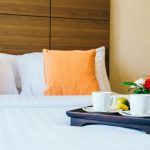


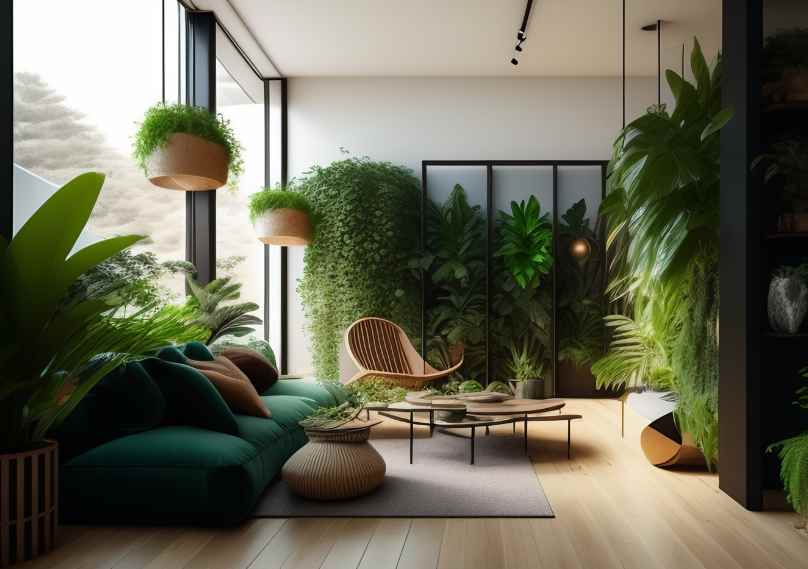


Session expired
Please log in again. The login page will open in a new tab. After logging in you can close it and return to this page.
Session expired
Please log in again. The login page will open in a new tab. After logging in you can close it and return to this page.